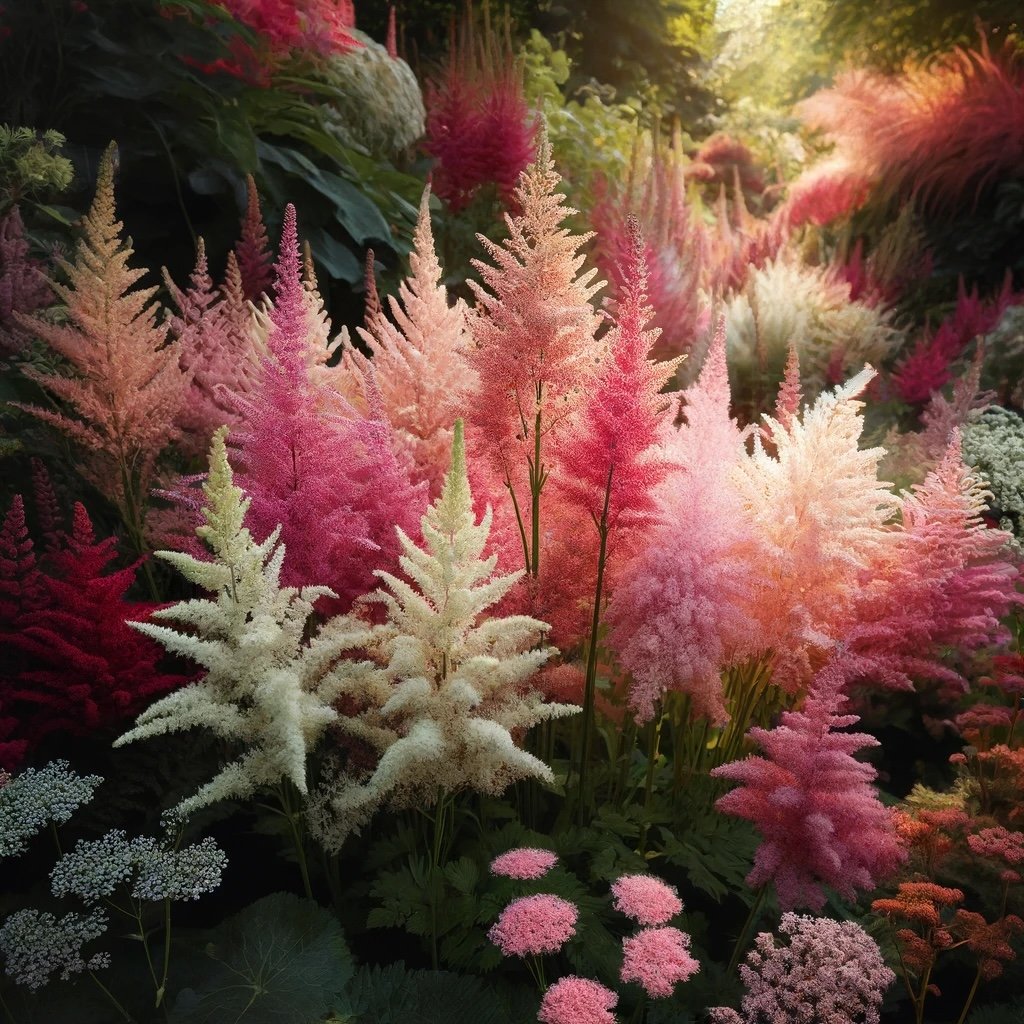Blooming Beauties: Creating a Deer- Resistant Shade Garden with Cut Flowers
Gardening in the shade can be a delightful challenge, especially when you’re aiming to cultivate beautiful cut flowers. Add the presence of deer into the mix, and the challenge becomes a bit more complex. But don't worry, with a bit of planning and the right plant choices, you can create a stunning shade garden that's also deer-resistant. Here are some fantastic ideas to get you started.
Understanding Your Shade Garden
Before selecting plants, it’s crucial to understand the type of shade your garden has. Shade can be categorized into three types:
Light Shade: Areas that receive filtered sunlight, such as those under a canopy of trees.
Partial Shade: Spots that get sun for part of the day, usually 3-6 hours.
Full Shade: Areas that receive less than 3 hours of direct sunlight.
Knowing this helps you choose the right plants for your specific garden conditions.
| Top Deer- Resistant Cut Flowers for Shade | Description | Growing Conditions | Why Deer Avoid Them |
|---|---|---|---|
| Astilbe (Astilbe spp.) | Known for their feathery plumes, astilbes come in various colors, including pink, red, and white. | Partial to full shade. | Deer tend to dislike the texture and taste of astilbe foliage. |
| Bleeding Heart | With its heart-shaped flowers in pink or white, bleeding heart adds a romantic touch to any garden. | Prefers partial shade. | The plant’s toxicity makes it unattractive to deer. |
| Foxglove (Digitalis purpurea) | Tall spikes of tubular flowers in shades of purple, pink, and white. | Partial to full shade. | Foxglove contains toxic compounds that deer instinctively avoid. |
| Lungwort (Pulmonaria spp.) | Known for their spotted leaves and blue, pink, or white flowers. | Partial to full shade. | The hairy leaves are unappealing to deer. |
| Japanese Painted Fern (Athyrium niponicum) | While not a flowering plant, its stunning foliage adds texture and color. | Partial to full shade. | Deer are generally not fond of ferns. |
| Hellebore (Helleborus spp.) | Also known as Lenten roses, they bloom in early spring with cup-shaped flowers. | Partial to full shade. | Hellebores are toxic, making them deer-resistant. |
| Columbine (Aquilegia spp.) | Delicate, nodding flowers that come in various colors. | Partial shade. | The unique foliage and taste are not preferred by deer. |
| Turtlehead (Chelone spp.) | Named for its turtle-shaped flowers, it comes in shades of pink, white, and purple. | Partial to full shade. | The taste and texture deter deer. |
| Corydalis (Corydalis lutea) | Bright yellow, tubular flowers that bloom profusely. | Partial shade. | Deer find the foliage and flowers unappealing. |
| Brunnera (Brunnera macrophylla) | Heart-shaped leaves and delicate blue flowers. | Partial to full shade. | The hairy leaves deter deer. |
| Coral Bells (Heuchera spp) | Attractive foliage in various colors and spikes of small flowers. | Partial shade. | The taste and texture are unappealing to deer. |
| Jack-in-the-Pulpit (Arisaema triphyllum) | Unique, hooded flowers with an intriguing structure. | Partial to full shade. | The plant contains compounds that deer avoid. |
| Jacob's Ladder (Polemonium caeruleum) | Graceful, fern-like foliage with clusters of blue flowers. | Partial shade. | The foliage and flowers are not favored by deer. |
| Goat’s Beard (Aruncus dioicus) | Large, feathery white plumes. | Partial to full shade. | The texture and taste deter deer. |
| Solomon’s Seal (Polygonatum spp.) | Arching stems with small, bell-shaped flowers. | Partial to full shade. | The taste and texture are unappealing to deer. |
| Toad Lily (Tricyrtis hirta) | Orchid-like flowers that bloom in late summer. | Partial to full shade. | The hairy stems and leaves deter deer. |
| Bugleweed (Ajuga reptans) | Ground cover with spikes of blue flowers. | Partial to full shade. | The taste and texture are not appealing to deer. |
| False Solomon's Seal (Maianthemum racemosum) | Feathery clusters of white flowers followed by red berries. | Partial to full shade. | The plant is toxic to deer. |
| Meadowsweet (Filipendula ulmaria) | Tall plumes of tiny white flowers. | Partial shade. | The taste and texture are not appealing to deer. |
| Virginia Bluebells (Mertensia virginica) | Bell-shaped blue flowers. | Partial to full shade. | The plant contains compounds that deer avoid. |





Creating a deer-resistant shade garden with beautiful cut flowers is not only possible but can be incredibly rewarding. With the right plants and strategies, you can enjoy a thriving, vibrant garden while keeping deer at bay. Happy gardening!

